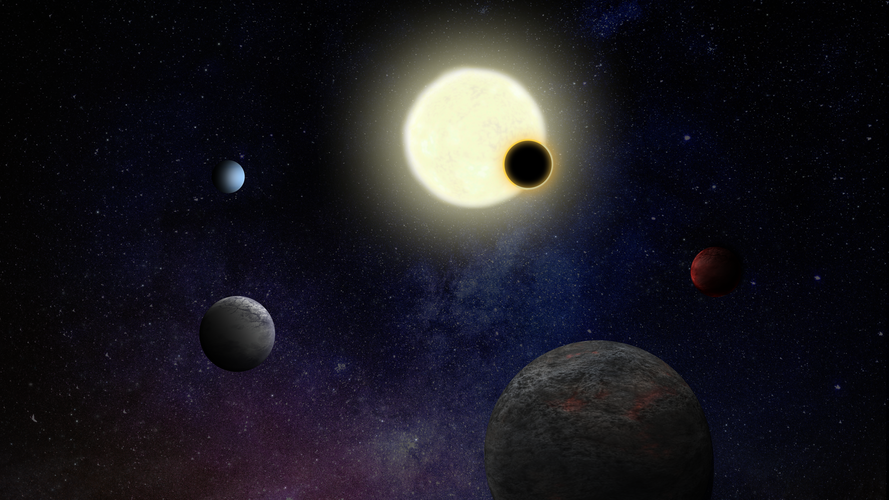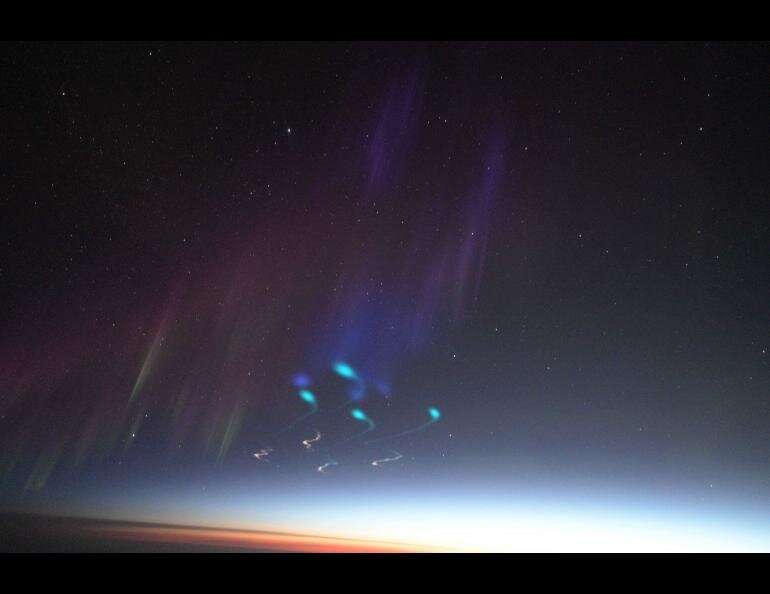
Copernical Team
Geophysicists detect electron dance deep inside the Earth, with a Twist
 Most are aware that electrons are negatively charged particles that surround the nucleus of atoms and whose behaviour governs chemical interactions. However, it is less commonly known that electrons come in two distinct kinds: spin-up and spin-down. And the tendency for pairing between up and down spin electrons, forming "dance partners" with one another, is one of the most important behaviours
Most are aware that electrons are negatively charged particles that surround the nucleus of atoms and whose behaviour governs chemical interactions. However, it is less commonly known that electrons come in two distinct kinds: spin-up and spin-down. And the tendency for pairing between up and down spin electrons, forming "dance partners" with one another, is one of the most important behaviours Quantum computers getting connected
 A promising route towards larger quantum computers is to orchestrate multiple task-optimised smaller systems. To dynamically connect and entangle any two systems, photonic interference emerges as a powerful method, due to its compatibility with on-chip devices and long-distance propagation in quantum networks.
One of the main obstacles towards the commercialization of quantum photonics rem
A promising route towards larger quantum computers is to orchestrate multiple task-optimised smaller systems. To dynamically connect and entangle any two systems, photonic interference emerges as a powerful method, due to its compatibility with on-chip devices and long-distance propagation in quantum networks.
One of the main obstacles towards the commercialization of quantum photonics rem Satellites reveal Ethiopian elephants under threat
 Tens of thousands of illegal human settlements pose a real threat to the continued existence of an endangered elephant population, according to satellite analysis of the Babile Elephant Sanctuary in eastern Ethiopia by University of Oxford researchers and the Born Free Foundation.
Researchers from Oxford's School of Geography and the Environment and Born Free found, in the 11 years to 2017
Tens of thousands of illegal human settlements pose a real threat to the continued existence of an endangered elephant population, according to satellite analysis of the Babile Elephant Sanctuary in eastern Ethiopia by University of Oxford researchers and the Born Free Foundation.
Researchers from Oxford's School of Geography and the Environment and Born Free found, in the 11 years to 2017 Kymeta and OneWeb Partner to Develop Flat Panel User Terminal for LEO Network
 Kymeta and OneWeb have announced a joint development agreement (JDA) to develop an innovative flat panel electronically steered user terminal that is compatible with the OneWeb network to support land fixed applications and leading the way to various mobility applications like land mobile, maritime, and other mobility needs of the future.
The Kymeta u8 flat panel antenna technology provide
Kymeta and OneWeb have announced a joint development agreement (JDA) to develop an innovative flat panel electronically steered user terminal that is compatible with the OneWeb network to support land fixed applications and leading the way to various mobility applications like land mobile, maritime, and other mobility needs of the future.
The Kymeta u8 flat panel antenna technology provide Space Force welcomes North Carolina A&T to the University Partnership Program
 The U.S. Space Force added North Carolina Agricultural and Technical State University to its University Partnership Program during a virtual ceremony Dec. 1.
N.C. A&T Chancellor Harold L. Martin Sr. and Vice Chief of Space Operations Gen. David D. Thompson signed the memorandum of understanding from their respective locations on campus in East Greensboro, North Carolina and at the Pentagon
The U.S. Space Force added North Carolina Agricultural and Technical State University to its University Partnership Program during a virtual ceremony Dec. 1.
N.C. A&T Chancellor Harold L. Martin Sr. and Vice Chief of Space Operations Gen. David D. Thompson signed the memorandum of understanding from their respective locations on campus in East Greensboro, North Carolina and at the Pentagon NASA rocket to study mysterious area above the North Pole
 Strange things happen in Earth's atmosphere at high latitudes. Around local noon, when the Sun is at its highest point, a funnel-shaped gap in our planet's magnetic field passes overhead. Earth's magnetic field shields us from the solar wind, the stream of charged particles spewing off the Sun. The gap in that field, called the polar cusp, allows the solar wind a direct line of access to Earth's
Strange things happen in Earth's atmosphere at high latitudes. Around local noon, when the Sun is at its highest point, a funnel-shaped gap in our planet's magnetic field passes overhead. Earth's magnetic field shields us from the solar wind, the stream of charged particles spewing off the Sun. The gap in that field, called the polar cusp, allows the solar wind a direct line of access to Earth's Autonomous passenger shuttle service trialled in Oxfordshire
London, UK (SPX) Dec 01, 2021 A fully autonomous passenger shuttle service begins trials on UK roads today, Science Minister George Freeman has announced. The new service is being trialled by Darwin Innovation Group, with support from the European Space Agency (ESA) and the UK Space Agency. An autonomous shuttle will transport passengers around Harwell Science and Innovation Campus in Oxfordshire, which is home to some
A fully autonomous passenger shuttle service begins trials on UK roads today, Science Minister George Freeman has announced. The new service is being trialled by Darwin Innovation Group, with support from the European Space Agency (ESA) and the UK Space Agency. An autonomous shuttle will transport passengers around Harwell Science and Innovation Campus in Oxfordshire, which is home to some
When variations in Earth's orbit drive biological evolution
 Coccolithophores are microscopic algae that form tiny limestone plates, called coccoliths, around their single cells. The shape and size of coccoliths varies according to the species. After their death, coccolithophores sink to the bottom of the ocean and their coccoliths accumulate in sediments, which faithfully record the detailed evolution of these organisms over geological time.
A team
Coccolithophores are microscopic algae that form tiny limestone plates, called coccoliths, around their single cells. The shape and size of coccoliths varies according to the species. After their death, coccolithophores sink to the bottom of the ocean and their coccoliths accumulate in sediments, which faithfully record the detailed evolution of these organisms over geological time.
A team Airbus will build ESA’s Ariel exoplanet satellite

ESA and Airbus have signed a contract to move forward with the design and construction of the Atmospheric Remote-sensing Infrared Exoplanet Large-survey, Ariel, planned for launch in 2029.
Rocket flies high over Norway in scientist's atmosphere experiment

A NASA sounding rocket soared high from a launchpad in Norway on Wednesday morning in a decades-old quest to understand the cause of a persistent dense patch of upper atmosphere on Earth's sun-facing side.
The Cusp Region Experiment-2, or C-REX-2, is headed by space physicist Mark Conde of the University of Alaska Fairbanks Geophysical Institute and funded by NASA.
